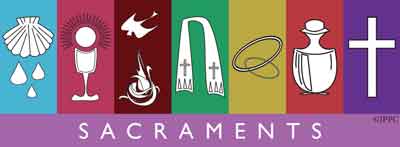First Reading – Acts 3:13-15, 17-19;
Second Reading – 1 John 2:1-5;
Gospel – Luke 24:35-48
In our journey through life, we are confronted with several problems and difficulties which can make us lose our perspective. We can lose all direction to life and remain helpless. Then left to us we become nothing and tend to remain with uncertainty. In such situations we need positive support, a sincere understanding which can place us on the right path. In the Easter context we see Jesus as a consoler and help to the disciples filled with fear. He comes constantly to them and remains with them, guides them and eats with them. By breaking the bread with the disciples and sharing the meal he makes them experience his real presence.
In the first reading we have the address of Peter to the people assemble there explaining God’s saving work that is fulfilled in the death and glorification of Jesus Christ. This address follows immediately after the miracle of healing the cripple by Peter and John. The passage is made even more dramatic by the fact that while Peter was giving the testimony, the cripple who was healed was beside them giving praise to God for his healing. Peter explained to those present that the apostles were not the source of healing but Jesus who was with them and whom they had killed. Peter feels privileged to announce that he and his companions were witnesses to the fact that death and ignorance is not the end of the account.
In the second reading from the first letter of John the Apostle the author encourages his disciples not to sin. However, he is realist enough to recognize that sin is a possibility in the lives of Christians. In such a case we can trust that Jesus will be our advocate with the Father and will expiate our sins. We are certain then that Jesus intercedes for us and we know that we are to pray, we are to do and we are to be, persons for each other. John uses the affectionate term, my dear children seven times, and dearly beloved six times in this letter, to show how concerned he is about his church. At the same time, he tells them that we can be sure that we know God only by keeping his commandments. If anyone who claims that he knows God and does not keep his commandments then he is a liar, refusing to admit the truth. John tells us that God’s love for us.
Today we have two events in the gospel of Jesus appearing to his disciples that are distinct in time but closely linked to each other. The gospel begins with the story of the two disciples who had the experience of walking with Jesus and their recognition of the Lord in the breaking of bread. Jesus remaining close to them drives away all their doubts and unbelief by giving them the gift of peace. He asks the disciples to touch and feel him and experience his real presence among them. He remains as the real friend in their lives and helps them back into confidence. The disciples, gathered in the room, were hearing the account of these two disciples who have just returned from Emmaus after their meeting with Jesus. While this event was being discussed, Jesus mysteriously appears once again in their midst. Surprised by his sudden appearance the disciples are confused and terrified. He greets them with the familiar words, Peace be with you. The aim of Jesus was to bring peace into an environment of fear and consternation. The presence of Jesus does bring peace and joy.
The second event was the Lord’s preparation of the Apostles for their mission in the world: to go out and to proclaim the kingdom and forgiveness to all. These events are closely related to each other because they served to convince the disciples more fully of the extraordinary fact of the resurrection of Christ. Luke tells us that they were startled and frightened and supposed that they saw a spirit. He told them not to be troubled and there should be no hesitation in their hearts about him. First, Jesus presented himself to his disciples: he showed them his hands and his feet; he invited them to look at him closely, and even touch him, as he would later do for Saint Thomas. The purpose of this was to stress continuity and reality. The risen Lord, who was there in their midst, was intimately connected with Jesus of Nazareth whom they followed while he was alive. The difference was that now he had been raised from the dead and appeared to them as risen and glorified Lord.
We need to relive the “Upper Room Experience” in the Holy Mass: The same Jesus who, in the Upper Room, prepared his disciples for their preaching and witnessing mission, is present with us in the Eucharistic celebration. He invites us to share in the “Liturgy of the Word” and in “The Liturgy of Eucharist.” In the first part of the Mass, Jesus speaks to us through the “Word of God.” In the second part, He becomes our spiritual food and drink. Thus, today’s Gospel scene is repeated every Sunday on our parish altars. Like the early disciples, we come together to repent of our sins, express our thanks for the blessings we have received, listen to God’s words, and offer ourselves to God on the altar along with our gifts of bread and wine. We also share in the spiritual food Jesus supplies, and we are sent to share his message with the entire world.

